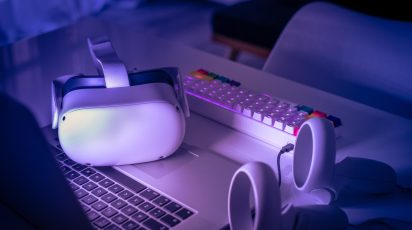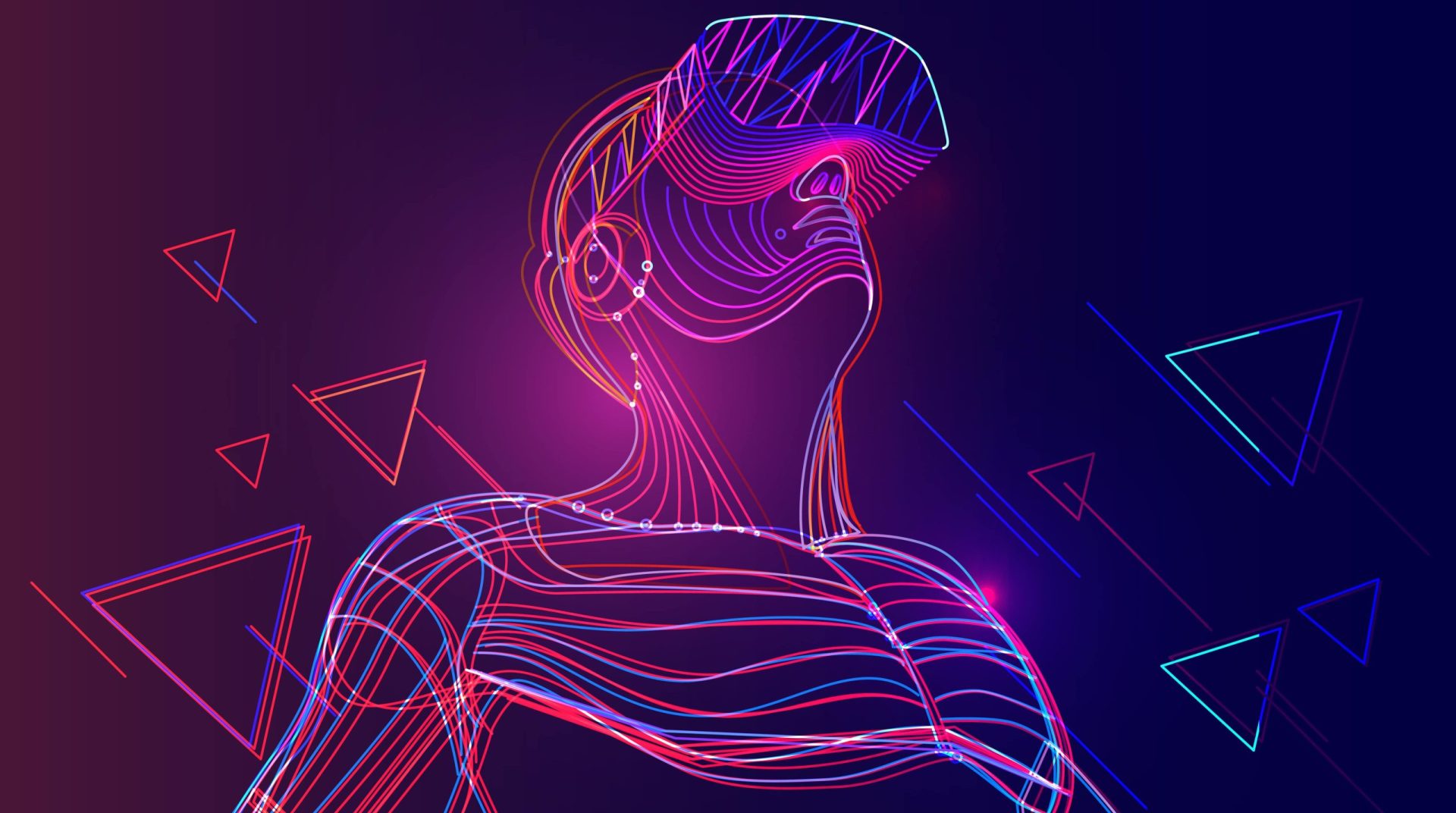
August 3, 2022
The virtual reality of the future: 21st century
Rome wasn’t built in a day, and neither was virtual reality (VR). In this short period of its development, it has delivered so much. But the question is, what is it that humanity will be dealing with by the end of this century? We have prepared a real treat for you as this blog post is a timeline of predictions for the development of VR that lies ahead. Get comfortable as we take a trip into the virtual reality of this decade.
Virtual reality as we know it today
By now, VR has brought us many fantastic experiences. We use it in retail, healthcare, education, entertainment, architecture, tourism, real estate and many more industries. The list is rather long, but the most important element are the numbers. By now, there are 171 million VR users worldwide, with a tendency towards rapid growth. Today, we face stand-alone headsets, immersive experiences, realistic graphics, and interactivity. Our characters are a part of a unique world known as the Metaverse, where we interact with communities, build our own real estate and invest in non-fungible tokens (NFTs) as a new type of cryptocurrency. It sounds fantastic, but in only eight years from now, things are predicted to take off even more dramatically. Future Business Tech has delivered pretty some great insight into the future – the one that inspired us to create this blog post for you.
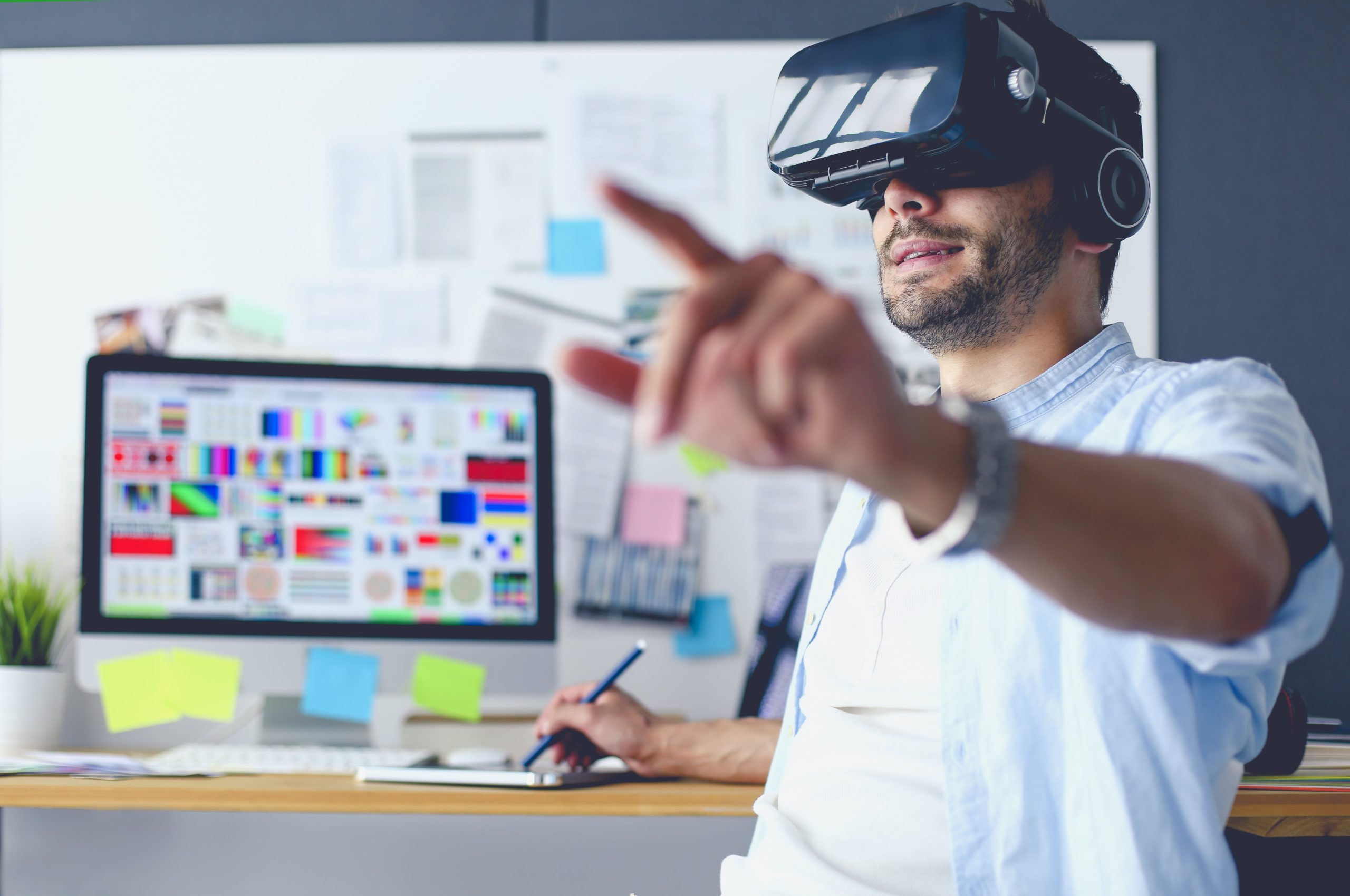
2030 will bring a fantastic hardware upgrade
The end of this decade will introduce us to a new level of VR headsets as 8K headsets will become commonplace. 8K resolution will give us a clearer picture, thus eliminating pixelization when observing objects up close. With upgraded networks, latency will be a part of the past, and haptic suits will receive an upgrade to make them more user-friendly.
Next, a huge upgrade is coming in terms of controlling[or ‘modifying’] your VR experiences as more and more focus will be on the brain-computer interface. We will be able to control the technology easily simply by our own thoughts, thanks to sensors tracking our brain’s electrical signals. Simplistic bracelets and headbands will replace controllers with built-in sensors complementary to the brain-computer interfaces. This will enable VR content creators to track the emotional state of each user – within GDPR compliances, of course. As we are only eight years away from this moment, we can’t expect this feature to be perfect. For that, we will have to travel a little further into the future.
By 2030, humanity will have forgotten the controversy around 5G as we will be immersed deep into 6G. Because of 6G, virtual worlds look set to be upscaled in size and incredibly detailed, which, as Future Business Tech explained, will be possible “due to the emergence of 6G, which is 100 times faster than 5G and runs at terabytes per second”. With 6G, our VR experiences will be even more enjoyable.
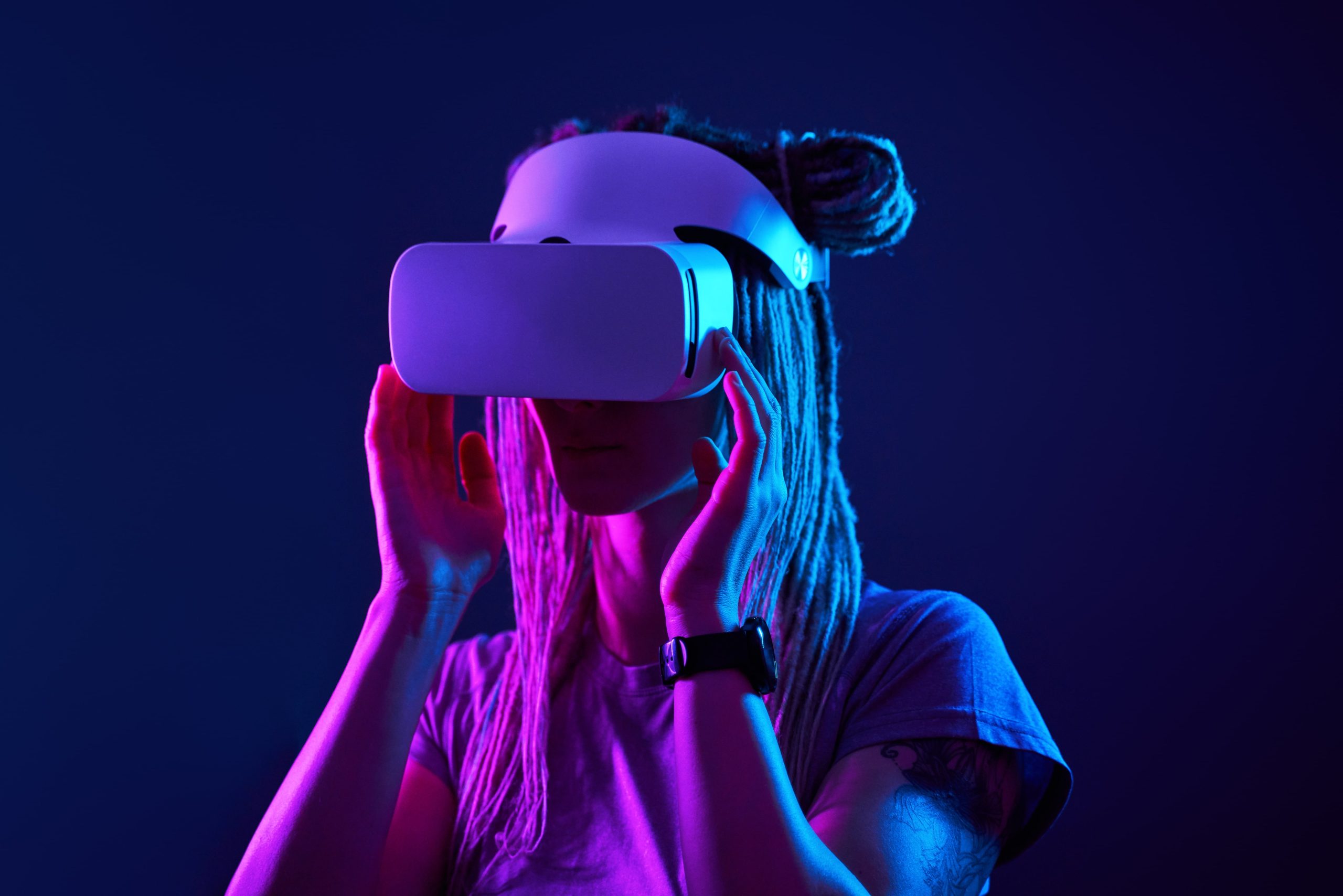
2050 is photorealistic and exciting
Just when we thought the VR experience couldn’t get any better, we look set to be experiencing 2050’s VR using 16K headsets, which is 16 times better than what we use today. Photorealistic VR experiences will become even more lifelike, and it will be almost impossible to tell them apart from reality. The forests will be rendered with sub-millimetre precision so that you will be able to see drops of water, damage on the leaves, and many other unique features. The brain-computer interfaces we’ve mentioned in the previous paragraph will become even more advanced, and by 2050, all VR headsets will incorporate this feature.
VR experiences will use brain signals to control objects and communicate with other VR users in various experiences, which is particularly interesting in relation to the VR training of the future and advanced VR games.”You can easily manipulate any object in a game using your brain signals,” explains Future Business Tech. The release of Unreal Engine 8 will open an entirely new door for VR creators, as virtual worlds will be significantly bigger and more detailed than those from 2030. Neural data collected from brain-computer interfaces will enable the creation of realistic characters with an infinite number of characteristics. Considering Metahuman, developed in 2020, is already pretty realistic, this will be the next level. Nevertheless, there will still be room for improvement, as the motion of our avatars isn’t predicted to be 100% fluid by this decade.
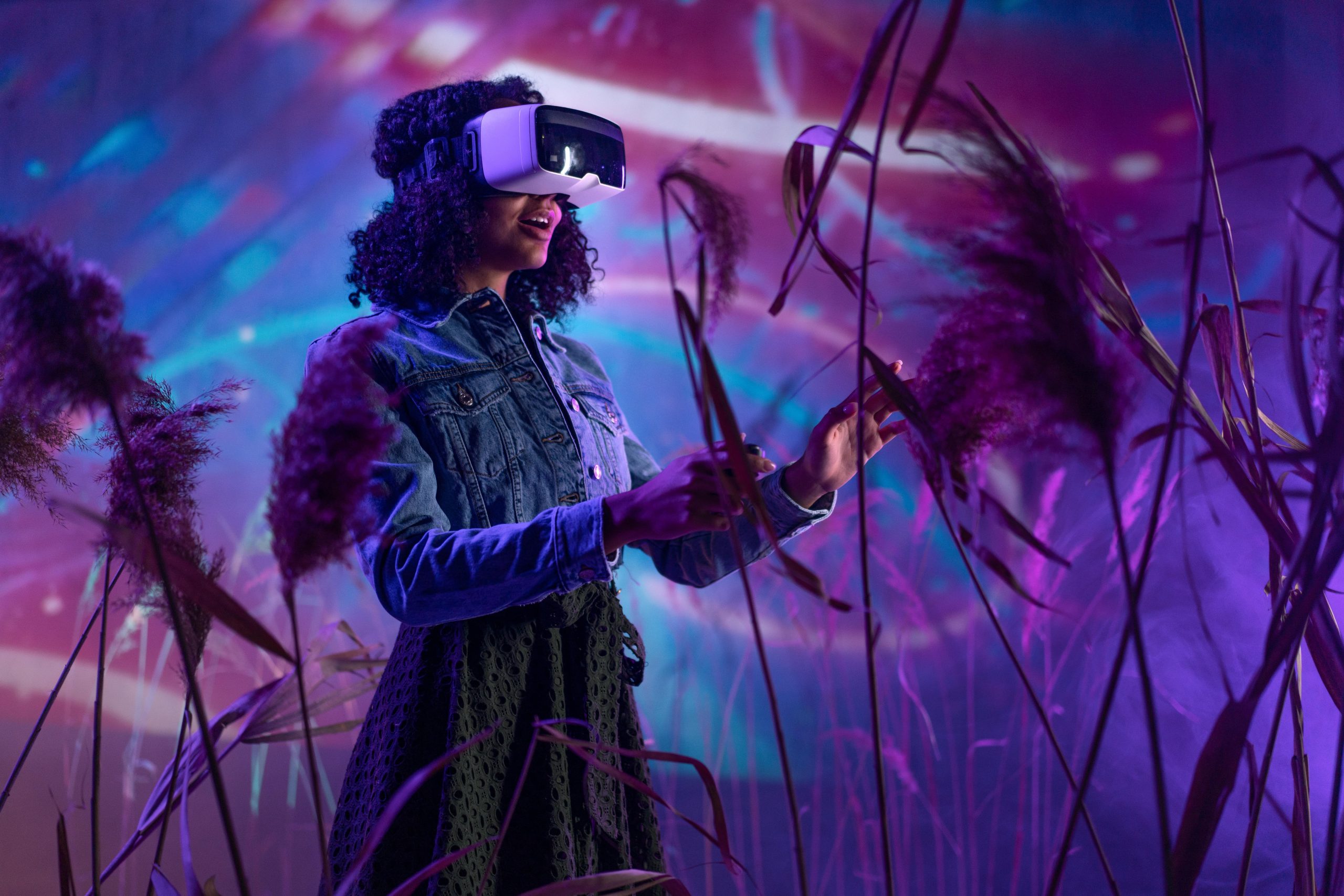
We will be exploring photorealistic worlds where you can visit museums, shops and offices. Here, conversation lines of non-playable characters (NPCs) will be unique and based on an advanced version of Generative Pre-trained Transformer (GPT-3). Audio will undergo a big change too, adding to the degree of immersion, which will be almost perfect by now. Soundwaves will bounce back from objects as they do in reality, while the general sound is predicted to be profound and complex, with a natural feel. According to Future Business Tech, “In addition to haptic technology, smell and tastes are digitized as well. Digital smells and tastes are beginning to be added to virtual environments and are accessible using signals from brain-computer interfaces”.
You will be able to experience virtual rain with the exact sound of it but also the smell and touch. Make no mistake – you will need a haptic suit for that, but still, this is pretty cool. Haptic suits will allow us to feel warmth, cold, and even a warm summer breeze. As a final element, the virtual environment is based on real-life locations, but this will be available even before 2050, thanks to major upgrades in 3D scanning, GPS and AI.
2100 will be as futuristic as it gets
As we move further towards 2100, which, from today’s standpoint, looks pretty much futuristic, to fully understand the potential of what humanity will face, we suggest you keep an open mind. Regarding VR of the future, the end of this century will be extremely photorealistic as just about every VR experience is predicted to have photorealistic graphics. All of this will be due to the high level of human intelligence we will have acquired by then.
Hardware will become more powerful, and its size will shrink even further, so supercomputers the size of an average laptop today are actually going to be a thing. Because of this level of graphics, it will be hard for some to set the virtual world and real world apart. Immersion will reach its peak thanks to a vast number of nanobots, which will be a regular feature by 2100. These nanobots are described as particles with limited functionality, meaning they won’t affect the human body at all. Nanobots will replace VR headsets and any kind of hardware, thus creating a VR experience that’s almost impossible to tell apart from reality.
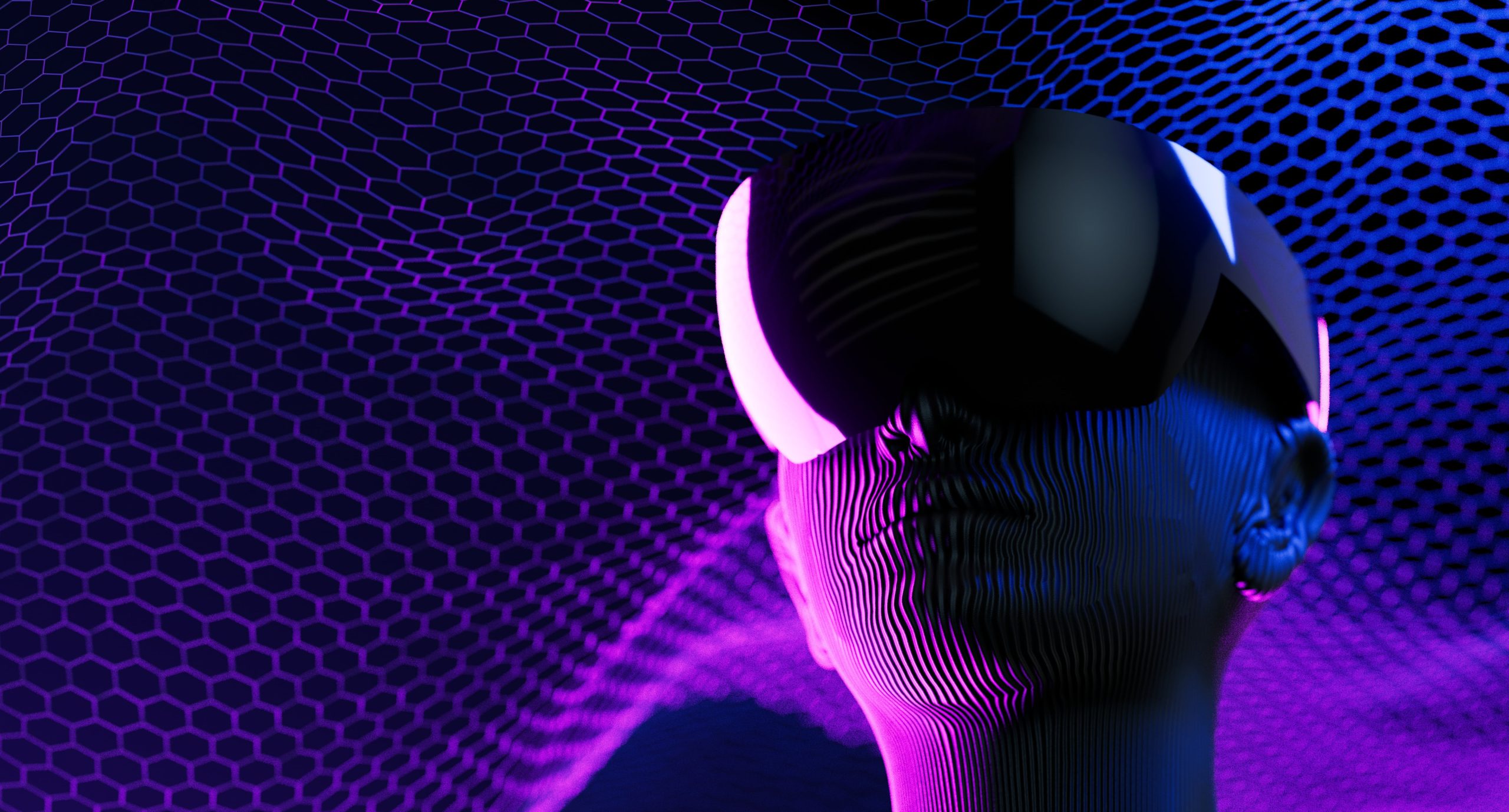
The size of the virtual worlds we will be able to experience is immense. Imagine whole planets you can explore from your living room through a few simple commands. This will be possible owing to a large number of improvements relating to the internet, memory storage and cloud computing. The final prediction is that we will finally be able to develop deep, meaningful connections with NPCs as they are predicted to develop “human” intelligence to the level of AI. Whether these connections will be healthy or not, we will have to see.
An exciting future ahead of us
To conclude this blog post, the future ahead of us looks to be full of incredible advancements. If all of these elements come true, humanity will live a pretty exciting life, at least in the field of VR. Vast virtual worlds, photorealistic graphics, and connections with NPCs are just a glimpse of what we’ll have on our plate. We will have to wait to find out whether these predictions come true. But we won’t have to wait too long, as fantastic stuff should be coming our way in just eight years from now. In the meantime, let’s just enjoy this – everything but a boring – trip.



